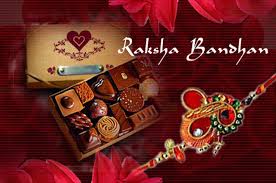Ganesha Chaturthi is the Hindu festival celebrated on the birthday (rebirth) of Lord Ganesha, the son of Shiva and Parvati.
It is believed that Lord Ganesh bestows his presence on earth for all his devotees during this festival. It is the day when Ganesha was born. Ganesha is widely worshipped as the god of wisdom, prosperity and good fortune and traditionally invoked at the beginning of any new venture or at the start of travel. The festival, also known as Vinayaka Chaturthi ("festival of Ganesha") is observed in the Hindu calendar month of Bhaadrapada, starting on the shukla chaturthi (fourth day of the waxing moon period). The date usually falls between 19 August and 20 September. The festival lasts for 10 days, ending on Anant Chaturdashi (fourteenth day of the waxing moon period).
While celebrated all over India, it is most elaborate in Maharashtra, Gujarat, Tamil Nadu, Goa, Andhra Pradesh, Karnataka, Odisha and Chhattisgarh. Outside India, it is celebrated widely in Nepal and by Hindus in the United States, Canada, Mauritius, Singapore, Malaysia, Thailand, Cambodia, Burma, Fiji, Trinidad & Tobago, and Guyana.
According to the Linga Purana, Ganesha was created by Lord Shiva and Goddess Parvati at the request of the Devas for being a Vighnakartaa (obstacle-creator) in the path of Rakshasas, and a Vighnahartaa (obstacle-averter) to help the Devas achieve fruits of their hard work.
It is believed that Lord Ganesh bestows his presence on earth for all his devotees during this festival. It is the day when Ganesha was born. Ganesha is widely worshipped as the god of wisdom, prosperity and good fortune and traditionally invoked at the beginning of any new venture or at the start of travel. The festival, also known as Vinayaka Chaturthi ("festival of Ganesha") is observed in the Hindu calendar month of Bhaadrapada, starting on the shukla chaturthi (fourth day of the waxing moon period). The date usually falls between 19 August and 20 September. The festival lasts for 10 days, ending on Anant Chaturdashi (fourteenth day of the waxing moon period).
While celebrated all over India, it is most elaborate in Maharashtra, Gujarat, Tamil Nadu, Goa, Andhra Pradesh, Karnataka, Odisha and Chhattisgarh. Outside India, it is celebrated widely in Nepal and by Hindus in the United States, Canada, Mauritius, Singapore, Malaysia, Thailand, Cambodia, Burma, Fiji, Trinidad & Tobago, and Guyana.
Legend
Traditional Ganesha Hindu stories tell that Lord Ganesha was created by goddess Parvati consort of Lord Shiva. Pravati created Ganesha out of sandalwood paste that she used for her bath and breathed life into the figure. She then set him to stand guard at her door while she bathed. Lord Shiva, who had gone out, returned and as Ganesha didn't know him , didn't allow him to enter. Lord Shiva became enraged by this and asked his follower Ganas to teach the child some manners. Ganesha who was very powerful, being born of Parvati, the embodiment of Shakti. He defeated Shiva's followers and declared that nobody was allowed to enter while his mother was bathing. The sage of heavens , Narada along with the Saptarishis sensed the growing turmoil and went to appease the boy with no results. Angered, the king of Gods, Indra attacked the boy with his entire heavenly army but even they didn't stand a chance. By then, this issue had become a matter of pride for Parvati and Shiva. Angry Shiva severed the head of the child. Parvati seeing this became enraged. Seeing parvati in anger Shiva promised that her son will be alive again. The devas searched for the head of dead person facing North. But they found only the head of a dead elephant. They brought the head of the elephant and Shiva fixed it on the child's body and brought him back to life. Lord Shiva also declared that from this day the boy would be called Ganesha (Gana Isha : Lord of Ganas).According to the Linga Purana, Ganesha was created by Lord Shiva and Goddess Parvati at the request of the Devas for being a Vighnakartaa (obstacle-creator) in the path of Rakshasas, and a Vighnahartaa (obstacle-averter) to help the Devas achieve fruits of their hard work.



